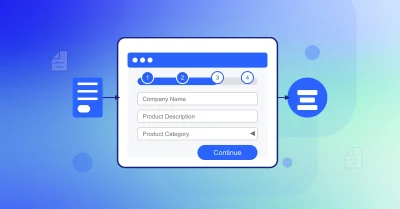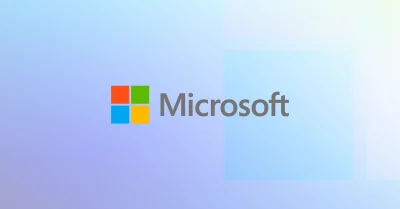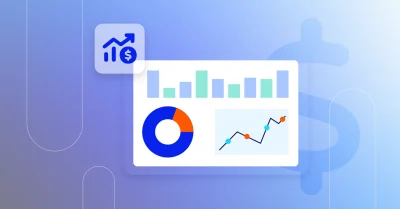The Internet of Things (IoT) continues to gain traction globally as more organizations in numerous industries incorporate IoT solutions at ever-higher rates. In fact, 88% of enterprise companies view IoT as critical to their success, according to Microsoft’s 2019 IoT Signals report.
Another significant statistic: By 2025, IDC estimates there will be 41.6 billion connected IoT devices or “things” generating more than 79 zettabytes (ZB) of data. These billions of devices are providing unprecedented business insights, enabling the digitization of operations and facilitating the introduction of new business models that can help improve your company’s competitive position.
In light of this rapid growth and immense opportunity, the best way to help your company meet high customer demand for IoT is to take an approach that supports easier access and faster adoption of next-gen technologies.
Leveraging economies of scale
Unlike the consumer space, where out-of-the-box IoT applications typically rely on a single connected device, commercial and industrial IoT solutions operate in a more complex environment with integration to heterogeneous legacy systems and processes.
As a result, consumer IoT applications are better positioned from the outset to leverage repeatability and economies of scale. Their benefits are clearly understood by consumers and commerce channels are available to reach critical mass.
However, there’s also good news for the IoT commercial and industrial space—delivery cycles for applications are shortening. As IoT matures and technology vendors and solution providers gain more experience developing and cross-selling solutions in multiple industries, they are increasingly moving toward delivering more standardized packages, reducing customization requirements and decreasing sales cycles.
How your company can achieve IoT scalability
Your company can meet the IoT needs of customers by working to improve overall reach and realize true scale. The key is to shift your focus from creating unique solutions to developing repeatable ones.
If every IoT solution you create is unique, highly customized or custom-made for each of your customers every single time, time-to-market significantly increases, limiting your ability to reach incremental customers and drive more revenue.
Furthermore, if you deploy custom solutions, you’ll not only delay adoption, but you’ll also increase your costs. This method results in lower margins and diminished returns on the upfront fixed investment required to define and develop each solution.
While these project-based services yield one-time gross margins of around 35%, repeatable solutions typically generate recurring revenue with gross margins above 65%. This represents a huge opportunity for your company.
Developing repeatable solutions
As you can see, placing focus on developing repeatable solutions will result in significantly higher profit for your business.
Repeatable solutions are replicable, integrated and have use cases in specific industry verticals. They are characterized by fixed delivery schedules, rapid implementation, specified performance and predetermined pricing. Still, repeatable solutions require some degree of high-end professional services such as business process re-engineering, system and network integration, and software customization.
The objective in offering repeatable solutions to your customers is to accelerate adoption so your company can achieve greater scale in less time. These solutions are created following the 80/20 principle, where 80% of the solution is standard for every customer and less than 20% is customized.
To get there, you can use incremental but complementary resources to develop and deploy IoT solutions significantly faster.
- IoT Reference Architectures: Major vendors like Microsoft, Amazon, Intel or IBM offer a set of specifications that describe the elements of an IoT solution, such as the technology principles, composition of cloud IoT services and devices that have proved to be production ready.
- IoT Kits and Solution Accelerators: Aligned to reference architectures, these are a ready-to-deploy subset of pre-integrated core components that jump-start the creation of a solution. The deployment typically includes all the required cloud-based services, along with code and analytics templates.
- Packaged IoT Solutions: Productized solutions are ready to use and already include all the required hardware, software and connectivity for a particular industry vertical and use case. Typically, they can be tailored and extended to unique business needs with minimal effort.
It’s easy for your company to develop repeatable solutions. Simply break down the process into these four steps:
- Define: The best way to start is for your company to consider which industries to focus on, and then narrow them down to just a few. By doing this, you’ll learn what your customers really need in each vertical, while gaining deep expertise in relevant use cases.
- Develop: Next, take what you learned about your customers in the first step and find ways to repackage your existing solutions to enhance your offerings. Often, your customers may ask for something similar to your current solutions, creating opportunities to productize your offerings.
- Productize: Transform the components of your solutions into repeatable products. First, determine what differentiates your solutions from others in the marketplace. And second, establish a recurring revenue model that defines how you will monetize your solutions (subscription, pay-as-you-go, etc.).
- Promote: Use your channel strategy to open more doors for sales by working with your partners. Launch campaigns that promote your solutions to new and current customers.
Grow your business with the power of the platform
CloudBlue is well-positioned to help you reach millions of users and achieve economies of scale as a hyperscale commerce platform and the world’s largest cloud marketplace supporting anything-as-a-service both in the consumer and commercial IoT segments.
To see how one company, TIM, uses CloudBlue to accelerate their company’s success through automated cloud delivery of telco services, watch the case study.
For more information about how to find and use repeatable solutions to accelerate, scale and monetize your business, along with other valuable insights, read the white paper: How to Overcome the Top 3 Market Challenges of IoT.












